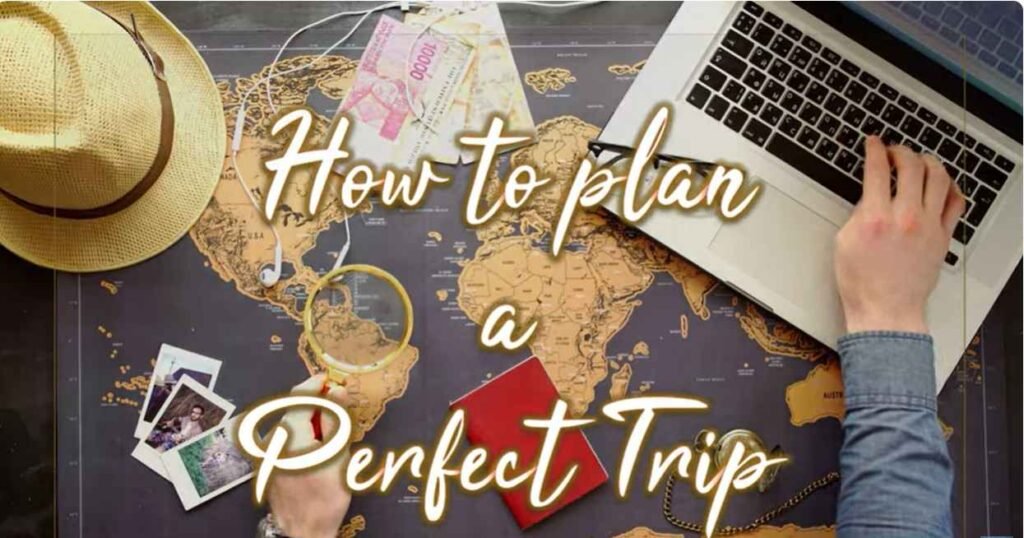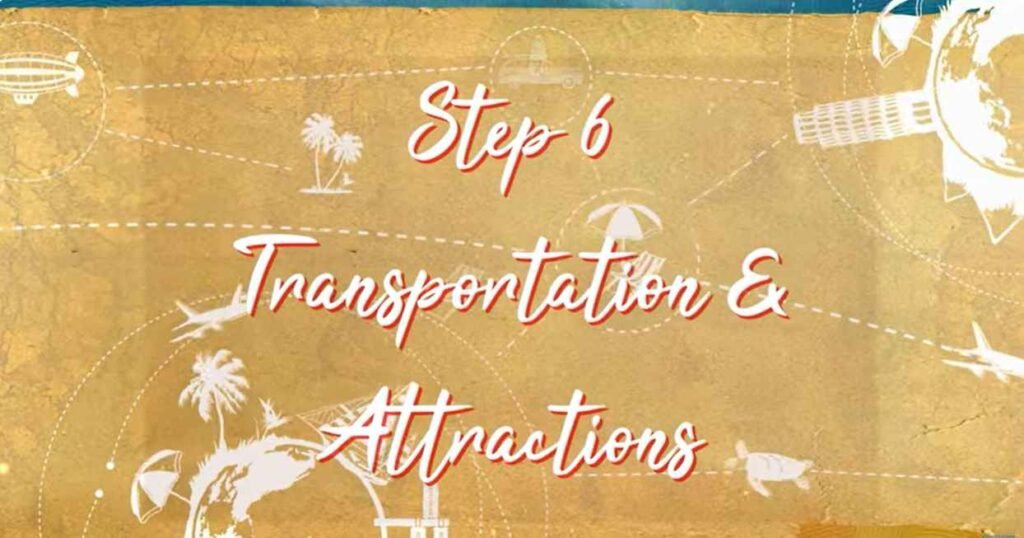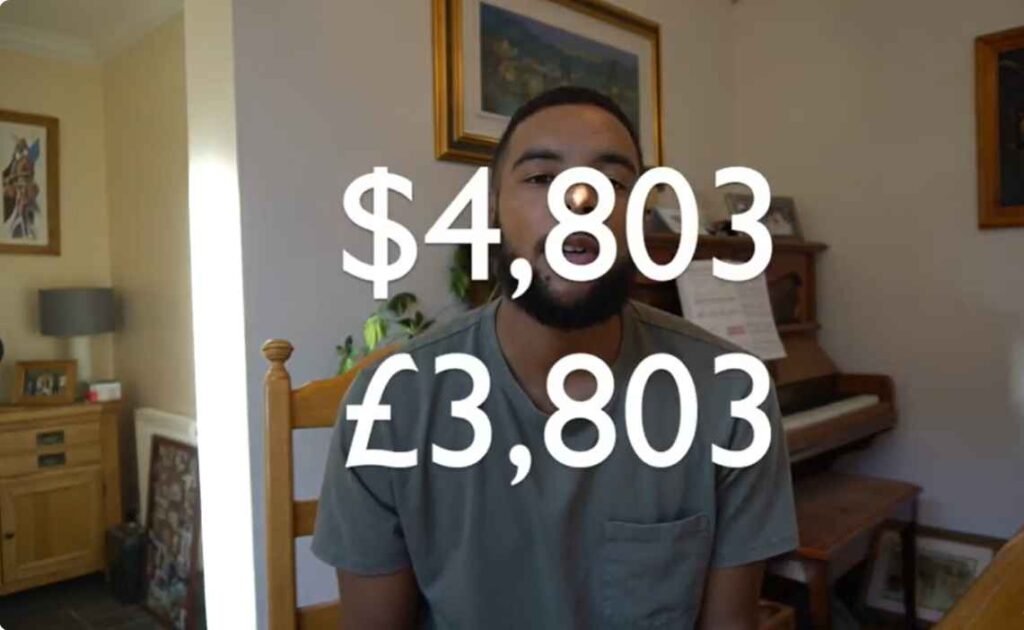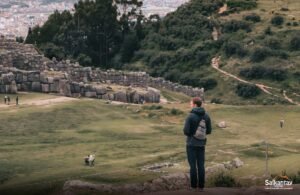If you are thinking about going on vacation for 3 months. you must be wondering how much money do You need to go travelling for 3 Months. So let me help you budget your travel costs in my blog post.
The cost for a 3-month trip varies widely, starting from $3,000 to $20,000. Your budget depends on your destination, accommodations, and travel style.
Planning an extended getaway can be an exciting yet daunting task, especially when it comes to budgeting. Each traveler’s spending habits and choices vary, affecting the overall cost. For thrifty backpackers who stay in hostels, use public transportation, and cook their meals, expenses can be kept lower.
Conversely, those preferring luxury hotels, fine dining, and private tours will find themselves at the higher end of the budget spectrum. To determine a more precise figure, consider factors such as visa fees, flights, travel insurance, and activities.
If you are thinking how much money do you need to go travelling for 3 Months? Then A well-planned budget will ensure that your three months of exploring are both memorable and financially manageable, allowing you to immerse in the cultures and experiences without financial stress clouding the journey.
Table of Contents
Toggle- Setting The Stage Of Travelling for 3 Months
- Budgeting Basics For Long-term Travel
- Transportation: Navigating Costs
- Unexpected Expenses And Emergency Funds
- Ways To Save And Manage Money While Travelling
- Putting It All Together: Sample Budgets
- Conclusion: The Real Cost Of Adventure
- Frequently Asked Questions On How Much Money Do You Need To Go Travelling For 3 Months
- Conclusion
Setting The Stage Of Travelling for 3 Months
Travelling for 3 Months is a thrilling prospect. Whether it’s for adventure, self-discovery, or cultural exploration, such a trip requires careful planning.
The amount of money needed will greatly depend on your travel goals and style. Establishing a plan and a budget early on is key for a successful journey.

Defining Your Travel Goals
Know what you want from your travels. Are you seeking relaxation on tropical beaches? Are you exploring ancient ruins? Maybe you’re volunteering. Your goals will dictate your destination, activities, and budget.
- Relaxation might mean budgeting for resorts.
- Adventure could include hiking gear or travel insurance.
- Cultural experiences may lead you to cooking classes or guided tours.
Variations In Travel Styles And Costs
Your travel style is unique. It will impact your budget. A backpacker’s budget is different from a luxury traveler’s expense.
| Travel Style | Daily Budget |
|---|---|
| Backpacker | $30-$50 |
| Mid-range | $50-$150 |
| Luxury | $150+ |
Remember, these figures can vary. A backpacker in Southeast Asia might spend less than in Europe. A luxury traveler may opt for five-star experiences which can quickly increase costs.
- Accommodation: Hostels vs. hotels.
- Transportation: Public transit vs. private cabs.
- Food: Street eats vs. fine dining.
- Activities: Free walking tours vs. paid excursions.
Budgeting Basics For Long-term Travel
Setting off on a three-month journey is thrilling. Proper budgeting can ease financial worries. Let’s break down the essentials you’ll need to consider.
Daily Expense Categories
Daily expenses are a mix of needs. Think of them as your everyday travel toolkit. A budget must cover all your bases.
- Transportation – Buses, trains, and rideshares.
- Activities – Entry fees for tourist spots and experiences.
- Extras – Souvenirs and unforeseen expenses.
Estimating Accommodation Costs
Accommodation takes a chunk of your budget. Prices vary widely. Research options early and consider alternatives like hostels.
| Type of Stay | Cost |
|---|---|
| Hotels | Higher-priced |
| Airbnb | Moderate |
| Hostels | Cost-effective |
Food And Dining: Balancing Cost And Experience
Eating is more than sustenance. It’s part of the cultural journey. Balance dining out with cooking your meals for savings.
- Street Food – Taste local flavors at low costs.
- Markets – Buy fresh ingredients to cook your meals.
- Restaurants – Choose wisely for occasional splurges.

Transportation: Navigating Costs
Embarking on a three-month voyage means tackling one of the most pressing concerns – transportation expenses. Smart planning slashes costs without sacrificing the joy of travel. Let’s explore savvy financial navigation for your journey.
Choosing Cost-effective Flight Options
Book early and save more. Airline prices often soar as departure days near. Use alerts from travel apps to snatch deals. Consider layovers; they can offer significant savings.
Check if budget airlines fly to your desired destinations. Flexibility with travel dates also leads to better rates.
- Book flights 2-3 months in advance.
- Set price alerts on travel websites.
- Include layovers for cheaper tickets.
- Use budget carriers for short hauls.
- Be flexible in your travel schedule.
Local Transportation Considerations
Navigating local transit requires insight. Cities often have buses, subways, and ride-shares. Each city’s cost varies. Purchase passes for savings; daily, weekly, or monthly options may be available. Ride bicycles in bike-friendly towns for health and economy.
| Mode | Cost Saving | Tip |
|---|---|---|
| Buses/Subways | Cheapest | Get passes for unlimited travel |
| Ride-shares | Moderate | Share rides for lower fares |
| Bicycles | Lowest | Rent or use bike-shares |
International And Long-distance Travel Tips
International rail passes offer broad travel at a single price. Sleeper buses or trains serve as transport and accommodation. For sea crossings, consider ferry tickets in bundles. Research if a global pass suits your itinerary. Overland journeys can be more than just moves between places; they’re part of your adventure.
- Investigate global rail passes for extended areas.
- Approach long-distance buses or trains as nightly stays to cut costs.
- Bundle ferry tickets for island hopping.
- Match global passes with your travel plans to ensure value.
Unexpected Expenses And Emergency Funds
Imagine you’re set for your 3-month dream journey. Your budget’s ready. But have you thought about those unforeseen costs that can pop up? It’s vital to consider and prepare for unexpected expenses and emergencies. They can come at any time and from anywhere. To help you gear up for these, let’s break down the essentials.
Insurance And Health-related Expenses
Travel insurance is a safety net you shouldn’t ignore. It covers lost luggage, trip cancellations, and medical emergencies. Let’s not forget those potential visits to clinics or pharmacies. Small issues like a cold can dampen your adventure spirit. So, here’s what to remember:
- Choose travel insurance wisely. Look for comprehensive coverage.
- Keep a stash for prescriptions, over-the-counter meds, and possibly doctor’s fees.
Contingency Funds For Unplanned Situations
Life is unpredictable, especially when traveling. A missed flight or a sudden hotel change can affect your wallet. It’s crucial to have a ‘just in case’ fund. A rule of thumb is to set aside an extra 10-15% of your total travel budget.
This will give you peace of mind and ensure you deal with issues head-on. Contingency funds can be your financial lifeline.
When planning this extra budget, consider:
| Type of Unplanned Expense | Cost Estimate |
|---|---|
| Transport Delays | $100-$200 |
| Affordable Accommodation | $50-$100 per night |
| Emergency Gear/Essentials | $20-$50 |
Remember, always aim to be over-prepared rather than under. Your travel experience relies heavily on your ability to adapt financially. Stay safe, secure, and ready to handle anything that comes your way!

Ways To Save And Manage Money While Travelling
Embarking on a three-month journey requires careful financial planning. It’s not merely about the savings you start with. It’s about stretching every dollar. Strategizing on expenses guarantees an adventure that won’t break the bank. Let’s dive into effective methods for frugal travel sans compromising experiences.
Tips For Thrifty Travellers
Becoming a thrifty traveler means making smart choices that protect your budget. Here’s how:
- Opt for hostels or guesthouses over hotels.
- Local eateries offer authentic, budget-friendly meals.
- Use public transport or walk when possible.
- Choose free activities like museums on no-cost days.
- Bulk attraction passes save money on multiple sights.
- Pack light to avoid checked baggage fees.
Using Technology For Budgeting And Savings
Technology simplifies tracking expenses. Use it to your advantage. Here’s where to start:
- Download budgeting apps to monitor every expense.
- Set daily spending limits to stay on track.
- Track exchange rates with currency conversion apps.
- Use digital banking for instant transfers and payments.
- Find discounts through apps on accommodations and tours.
Earning Money On The Road
There are creative ways to earn while you explore:
- Freelance online in writing, design, or coding.
- Sell photographs of your travel to stock websites.
- Teach English or other languages.
- Pick up casual work in hostels or bars.
- Work in exchange for room and board on farms or B&Bs.
Putting It All Together: Sample Budgets
Setting a budget for a three-month journey requires careful planning. Here’s how to create a realistic budget with some example breakdowns for different parts of the world.
Budget Breakdown For Different Regions
Travel costs can vary widely depending on the region. Let’s take a look at three different areas:
- Asia: Known for being budget-friendly, with hostel stays as low as $10 a night.
- Europe: A mix of costly and affordable countries, where costs can double or triple.
- Americas: Varies greatly from the budget-friendly South to the expensive North.
| Region | Accommodation | Food | Transportation | Activities | Total (per day) |
|---|---|---|---|---|---|
| Asia | $10-$30 | $5-$15 | $5-$20 | $10-$30 | $30-$95 |
| Europe | $30-$100 | $15-$40 | $10-$50 | $20-$100 | $75-$290 |
| Americas | $20-$80 | $10-$30 | $15-$40 | $20-$80 | $65-$230 |
For three months, multiply these daily costs by 90 to estimate the total budget you’ll need.
Real Traveller Case Studies
Below are real budgets from travelers who have explored these regions:
- Jane in Asia: Spent $2700 for 3 months, including flights.
- Matt in Europe: Used $8200 for a mix of hostels and budget hotels.
- Anna in the Americas: Managed with $7000, focusing on Central America.
Adjusting Your Budget Mid-trip: A How-to
If you find yourself spending more than planned, here’s what you can do:
- Switch to cheaper accommodations or consider hostels.
- Prepare meals rather than eating out.
- Opt for walking or public transit over taxis.
- Focus on free activities and attractions.
Stay flexible and track your spending to make your trip as exciting as it is affordable.

Conclusion: The Real Cost Of Adventure
Embarking on a three-month journey is more than a financial decision. It’s a step into a world of unknowns, excitement, and priceless experiences. As we wrap up, remember the cost of adventure goes beyond the dollars spent. This final section reveals not just the budget needed, but the true investment in unforgettable memories.
Summarizing The Financial Commitment
Planning your budget is crucial for a carefree adventure. We’ve discussed various costs, from flights and accommodation to food and activities. Totals can range widely based on destinations, travel styles, and personal preferences.
| Expense Category | Estimated Cost |
|---|---|
| Transportation | $1,500 – $3,000 |
| Accommodation | $2,000 – $6,000 |
| Food | $1,200 – $3,600 |
| Activities | $600 – $2,000 |
| Miscellaneous | $300 – $1,500 |
| Total Estimate | $5,600 – $16,100 |
The range is broad, so tailor a budget that fits your dream trip. Always include a buffer for unexpected expenses too.
The Value Of Experiences Over Expenses
Memories last longer than a bank balance. The joy of new friendships, breathtaking scenery, and immersive cultures can’t be measured in dollars and cents.
- Embrace local lifestyles
- Learn from each destination
- Collect stories, not just souvenirs
Invest in experiences; they make you richer. On returning home, you’ll cherish these moments more than a larger savings account. It’s wise spending that pays dividends in personal growth and happiness.
Frequently Asked Questions On How Much Money Do You Need To Go Travelling For 3 Months
How Much Does It Cost To Travel To The US for 3 Months?
The cost of traveling to the US for 3 months varies widely. Expect to spend between $3,000 and $9,000, depending on travel style, accommodation choices, and personal spending habits.
How Much Should I Save For 6 Months Of Travel?
Aim to save $10,000 to $30,000 for a 6-month travel period, factoring in accommodation, food, transportation, and activities. Costs vary based on destination and travel style. Adjust your budget for personal spending habits and destination costs.
How Much Money Do I Need To Travel The World For A Month?
The cost to travel the world for a month varies widely, from $1,500 to $10,000. Your budget depends on travel style, destinations, accommodation preferences, and spending habits.
How Much Money Do You Realistically Need To Travel?
The cost of travel varies widely, depending on the destination, duration, and style of travel. Realistically, budgeting at least $50 to $150 per day for basic expenses is sensible. Factors like accommodation choices, dining preferences, and transportation significantly impact the total expense.
Conclusion
Embarking on a three-month journey transforms dreams into life-changing experiences. Your budget hinges on many choices: destinations, accommodations, and travel style. Careful planning ensures the adventure doesn’t break the bank. Start saving, make informed decisions, and let the world be your classroom. I hope you got the message How Much Money Do You Need To Go Travelling For 3 Months? This blog post explains you pretty well about it.
Your unforgettable trip awaits; take that first step with confidence.



